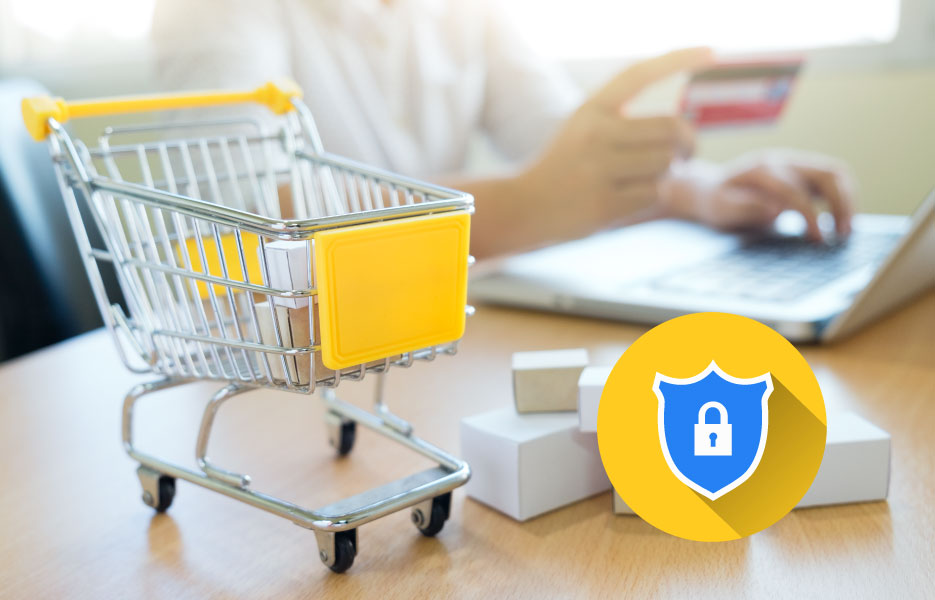

Black Friday Shopping: How to Outsmart Scammers and Bag Legit Deals!

There is a lot that can go wrong when you feel the urge, to do the splurge. Black Friday is tempting when the thing you have been eyeing out all year, finally gets discounted. Sometimes it can feel like a God-given sign for you to get it, but the reality is someone could be playing you.
Scammers are prowling rife when they know you will be at your most vulnerable. Pretending to be your favourite brand is as easy as copy and paste. Creating websites and social pages that seem 100% legit, can happen with the click of a button. Especially with AI making tasks easier, scamming has become even easier too.
So, pause take a moment when you are feeling all the emotions and the countdown timer on the deal begins. Most importantly ask yourself is this legit and assess if the website or social platform you want to buy from meets all the criteria.
In this article we hope to alert or refresh your memory on what to watch out for, this Black Friday, Festive Season or New Year. There are simple steps you can take to verify a website and social media platform, that won’t leave you crying in a corner, because someone stole your money. Below we list them to help you determine website and social media legitimacy…
Website Legitimacy:
- Check the URL: Verify the website’s URL. Ensure it’s spelt correctly and matches the official domain. Scammers are sneaky and often use similar URLs to deceive visitors, this can be as simple as doubling up on a letter, including an extra dot, dash or slash.
- Look for HTTPS and Security Seals: HTTPS encryption on a website is used for secure data transmission. Legitimate websites use this at the beginning of their URL. Look for a padlock symbol in the address bar and check for security seals from reputable companies, if it’s not secure it will have just HTTP.
- Review Contact Information: Clear contact information should be easily visible or possible to find on a legitimate website. It will normally include a physical address, email, and phone number. It is ideal to first contact the company to verify the information, if you are a little suspicious, and assess the responses too.
- Read Reviews and Feedback: If the company has been around for a while there will generally be reviews online or feedback about the website. Check the forums, review sites, or social media platforms to get insight into the user experiences of other individuals.
- Check for Spelling and Grammar: Spelling mistakes or poor grammar are common on many scam sites. Be cautious if you notice these issues, as someone who takes pride in their company would have had several people double-check for them to ensure things are correct.
- Verify Trust Seals and Certifications: Keep an eye out for trust seals or certifications from recognized authorities. You can verify these seals by clicking on them to ensure they are valid, then you know you are using a legitimate website.
- Look for Red Flags: This can be prevalent in excessive pop-ups, or requests for unnecessary personal information. Deals that just seem too good to be true.
- Use Safe Payment Methods: Avoid sites that only accept wire transfers or ask for unusual payment methods. Ensure the website uses secure payment gateways, such as credit or debit cards, PayPal, Apple Pay, Google Pay etc.
- Trust Your Instincts: If something smells fishy, swim away fast, it’s better to avoid sharing personal information or making purchases.

Social Media Legitimacy:
- Examine Profile Details: Legit accounts don’t skimp on the details. Their profile will include profile pictures, cover photos, bio information, and links to official websites.
- Verify Username and URL: Scammers are known to create usernames like the official ones to deceive users. Ensure the username matches the expected handle of the individual, brand, or organization.
- Look at the Account’s History: Genuine accounts have a history of posts, interactions, and engagement over time. Lack of activity or sudden bursts of activity could be red flags.
- Review Followers and Engagement: Things that might signal a fake account are unusually high numbers with low engagement (e.g., thousands of followers but very few likes or comments). Check the number of followers, likes, and comments.
- Cross-Check Information: Look for other sources confirming the account’s legitimacy, such as links to the account from the official website or mentions in credible news articles.
- Check for Blue Checkmarks or Badges: Many platforms provide verified badges to confirm the authenticity of accounts. Be cautious if a well-known account lacks this verification.
- Be Wary of Direct Messages and Requests: Accounts asking for personal information, money, or promoting suspicious links via direct messages are often fake or compromised.
- Report Suspicious Accounts: If you suspect an account is fake or engaging in harmful behaviour, report it to the social media platform.
- Trust Reliable Sources: Follow accounts that are recommended or endorsed by trusted sources, official websites, or reputable media outlets. Avoid the shifty ones like a plague!

Shopping online is exciting and convenient, but stay sharp!
The above steps provide a good starting point, but they’re not foolproof. Always stay vigilant and use your judgment when navigating online. Be sceptical of social accounts that seem suspicious to significantly reduce the risk of interacting with fake or malicious activity. Be wary, stay sharp, and let’s shop safely in this online jungle!











